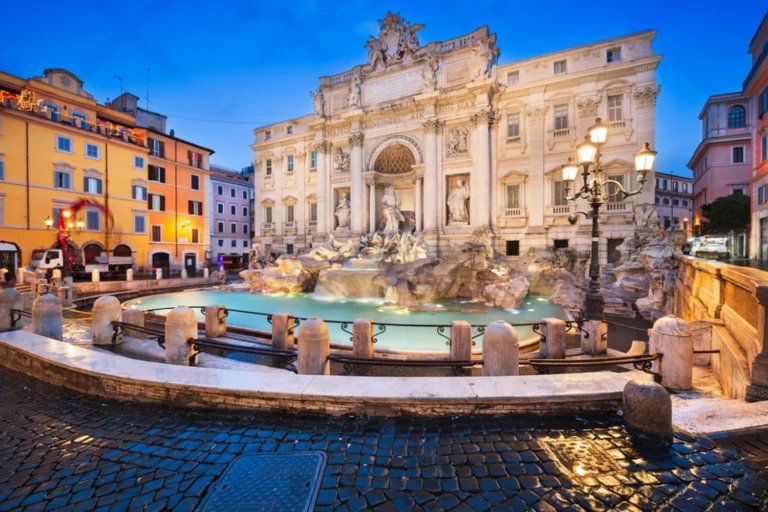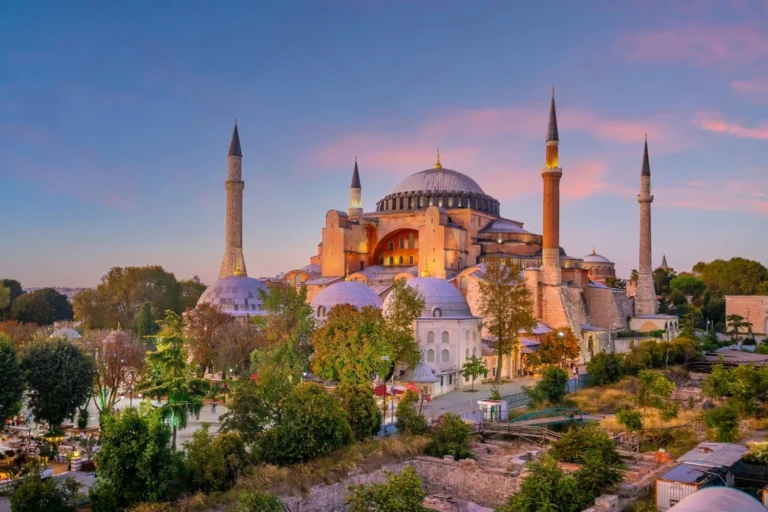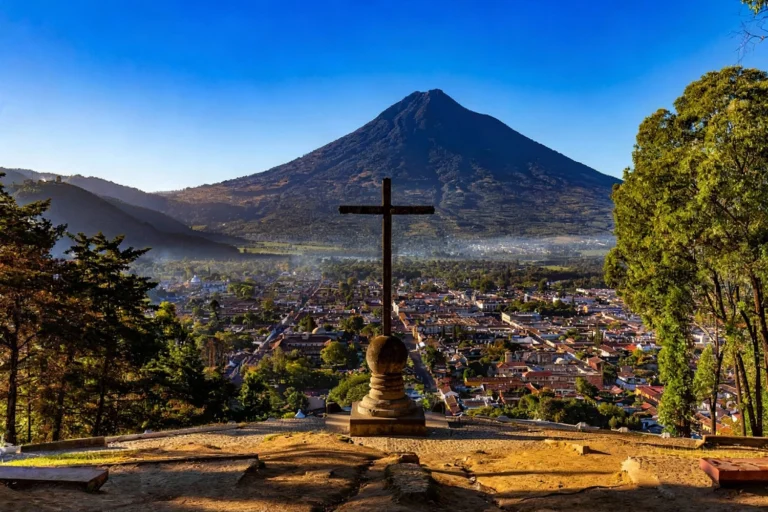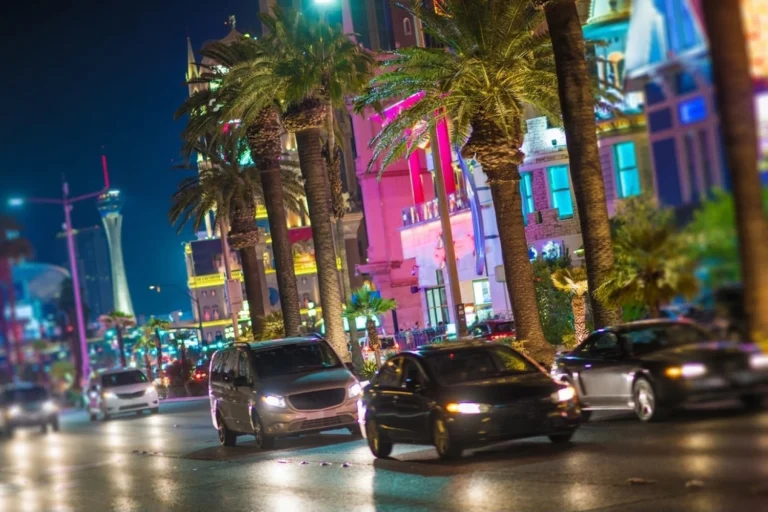San Francisco: 30 Unusual Stories Beneath the Fog and Freedom

Some places greet you loudly; in San Francisco, discovery arrives like lifting the corner of a quilt to find the hand stitched stories beneath. I came expecting the familiar outline, but found the hush between footsteps, salt on the breeze, and warm window light pooling on the sidewalk. In those quiet pockets, small human moments surface and linger, revealing a spirit that lives beyond the postcards. Come closer with me, and we’ll follow where curiosity naturally leads.
Yerba Buena, the name San Francisco almost kept
That faint mix of salt air and incense still sneaks up on you here, and every time it does I think, Yerba Buena would have been a beautiful fit. “Good herb” that’s what the Spanish meant, after the wild mint that once laced the shoreline. You can almost taste it in the fog, a cool, clean note under the city’s bustle.
It was renamed in 1847, but locals still joke the old name deserves a comeback. Between street murals, protest chants drifting down the avenues, and the warm spice from corner shops, the place smells like incense and conviction. Here, the old name feels like a small green ribbon tied to the wrist reminding you of roots that were fragrant and alive.
I like that an almost name can still color a place. Yerba Buena sounds like a gentle remedy, a soft leaf tucked in a beloved book, and maybe that’s why it lingers in conversations and jokes because the city keeps trying to be a balm as well as a spark. When the fog lifts and the pavement warms, you catch that mint of possibility and think, maybe the old name never really left.
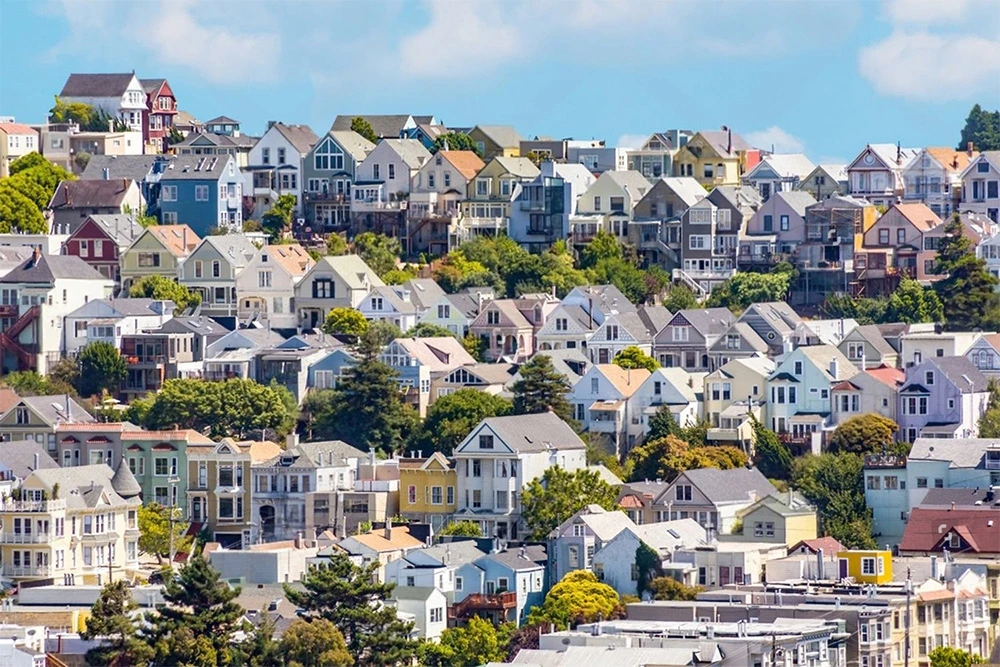
Skyscrapers quietly anchored to a forgotten fleet below
Some afternoons, when the glass towers mute the wind and the crosswalk lights blink like steady metronomes, I get this odd feeling that the ground is listening. Someone once told me about the ghost ships under these blocks, and suddenly the street feels like a harbor with no water, the city’s pulse steadied by something old and wooden.
Back in 1849, fevered with gold, crews ran inland and left their vessels to the tide and the fog. The boom kept rolling, and the city simply grew over them masts swallowed, decks entombed until it learned to stand on old wooden ribs, as if tomorrow’s skyline needed yesterday’s backbone to rise.
In San Francisco’s Financial District, it’s wild to realize the elevator hum and coffee chatter rest on timbers that once crossed oceans. It makes the rush feel gentler ambition here didn’t erase its past, it built on it. Some mornings the fog tastes faintly of salt and tar, and I catch myself breathing slower, grateful that the dreams that sailed in still hold the floor beneath our feet.
The emperor with no crown, still beloved
I love how some stories feel truer than facts; in San Francisco they belong to Emperor Norton I, who in 1859 simply announced himself Emperor of the United States. He printed his own currency, told Congress to dissolve, and dined for free wherever his “royal” presence was accepted. Imagine the clink of china and the soft bell of a cable car drifting through salt flecked fog while a room hushes and smiles an entire city sharing a citywide wink.
What gets me is the tenderness of it. He had no authority, yet people chose to honor him, letting a bit of imagination into everyday rituals beside soup steam and sourdough crust. I remember thinking that a place reveals its heart by the legends it keeps: here, it honored a man not for power, but for audacity and grace, and kept make believe in daily life.
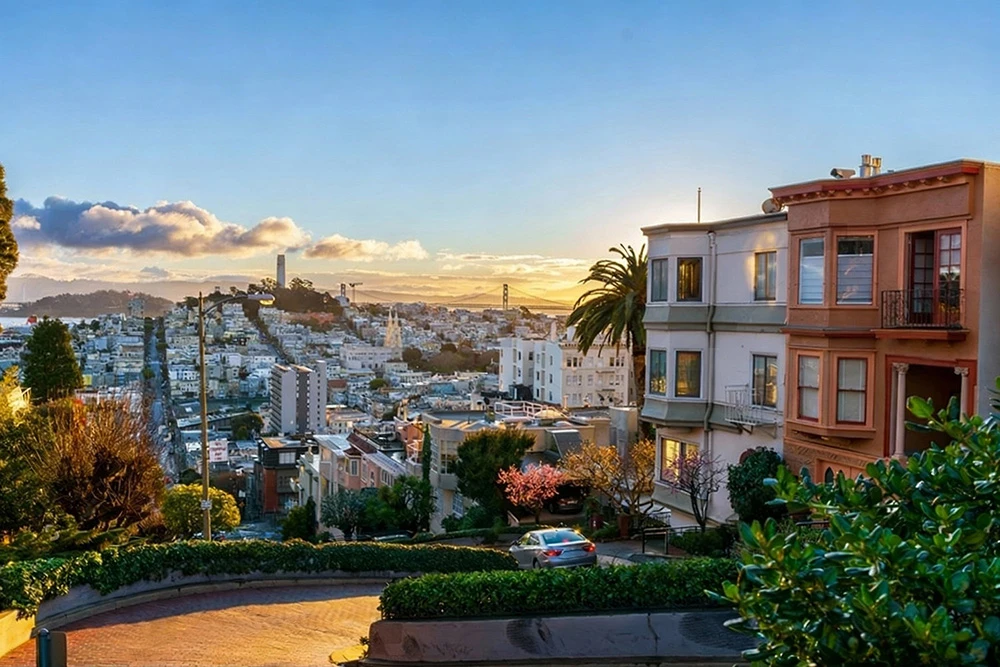
From Bumblebee Stripes to International Orange Glow
I still smile at the thought that San Francisco’s Golden Gate Bridge almost dressed like a bumblebee. The Navy wanted bold black and yellow for visibility, a shout across the water. It would have been loud, all caution and no romance. Instead, architect Irving Morrow leaned into a softer kind of courage and chose International Orange.
That color does something kind to the fog. On gray mornings it feels steady, like a heartbeat you can trust; at sunset it turns warm and forgiving, as if the day is taking one last deep breath. I remember learning that the orange was picked to complement the bay’s mist and the low sun, and it made me oddly happy someone trusted a feeling as much as a function.
Once, on a winter evening, the bridge glowed like an ember and the wind tasted faintly of salt. I thought about how close it came to being stripes and warning, and how different we might feel crossing it. The choice seems small just a color but it carries the city’s spirit: practical, yes, but with a streak of quiet beauty that refuses to shout when it can simply shine.
Meet Karl, the city’s moody, camera ready roommate
Some mornings he arrives without warning and the air tastes like salt and cold tea. Streetlights grow halos, foghorns speak in low vowels, and even the loudest corners fall quiet. I remember watching the bridge vanish edge by edge, as if someone pulled a soft sweater over the skyline, and feeling that familiar mix of annoyance and awe.
In San Francisco, we don’t just have fog – we know him by name. Karl the Fog posts his own moody portraits online and somehow looks better in every shot than the views he steals. It still makes me laugh that a weather pattern can have a fan base. Locals talk about him like a roommate with big feelings: sure, he obscures the world, but he brings out the kind of silver light that makes everything kinder on the eyes.
Maybe that’s why I love it here. Karl teaches you to enjoy the partial view, to find comfort in softened edges and the quiet that settles when certainty steps back. It’s funny how something that hides so much can make you notice more.
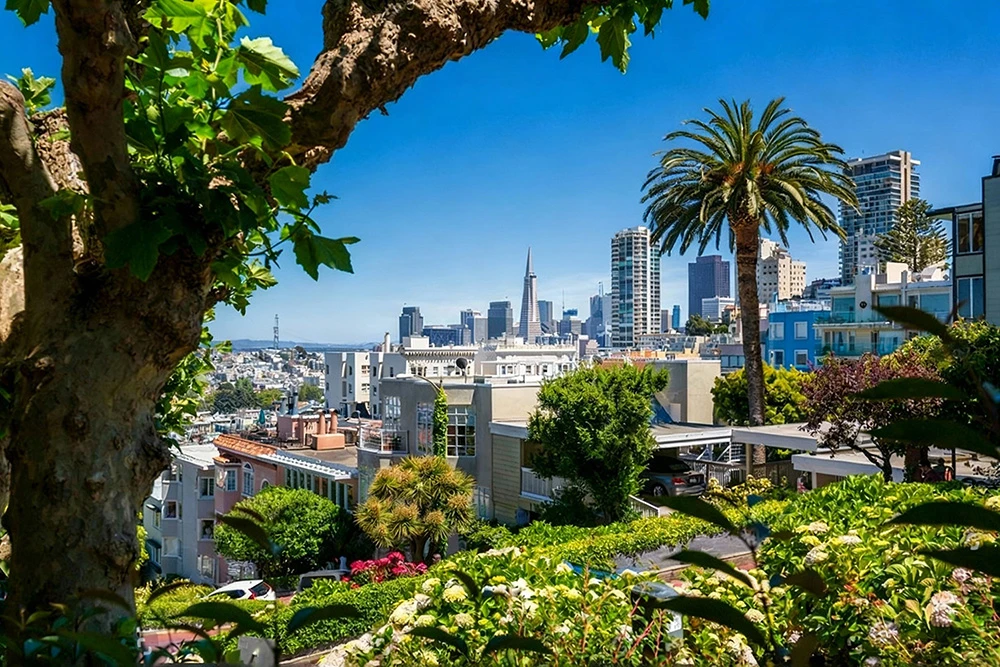
Hot showers with a chilling reason behind the steam
I remember hearing this and just shaking my head: the showers ran hot, not out of kindness, but calculation. Steam rose, water clattered against tile, and you could almost smell the salt sneaking in from outside. The idea that warmth could be a guard felt so human and a little cruel, like a small mercy that turns into a lock.
On Alcatraz, the bay looks bright and easy, but the currents run cold enough to sting your bones. Officials kept the water warm so no one’s body would learn the chill; if you never get used to cold, you don’t dare trust the waves. It says something about the place beauty on the surface, quiet strategy underneath that even comfort had a job to do.
The day sea lions took over Pier 39
I still laugh at how the docks look more like a living carpet warm backs gleaming, whiskers twitching, that happy racket bouncing between gull cries and foghorns. The air is salt and fish and sun warmed wood, and their barking stacks into a rough little chorus that makes strangers lean in and grin at each other. I remember thinking how easy it is to feel lighter here, as if the water itself had decided to keep us company.
They showed up after the 1989 earthquake, and while businesses tried to chase them off, the locals voted to let them stay honorary citizens of the Wharf, right there in San Francisco. It felt like the city choosing a heartbeat over tidiness, saying yes to a bit of unruly joy while everything was still learning how to steady again. Now they flop, nap, and squabble without shame, and somehow their presence turns a busy pier into a reminder: resilience can be noisy, sun baked, and wonderfully alive.
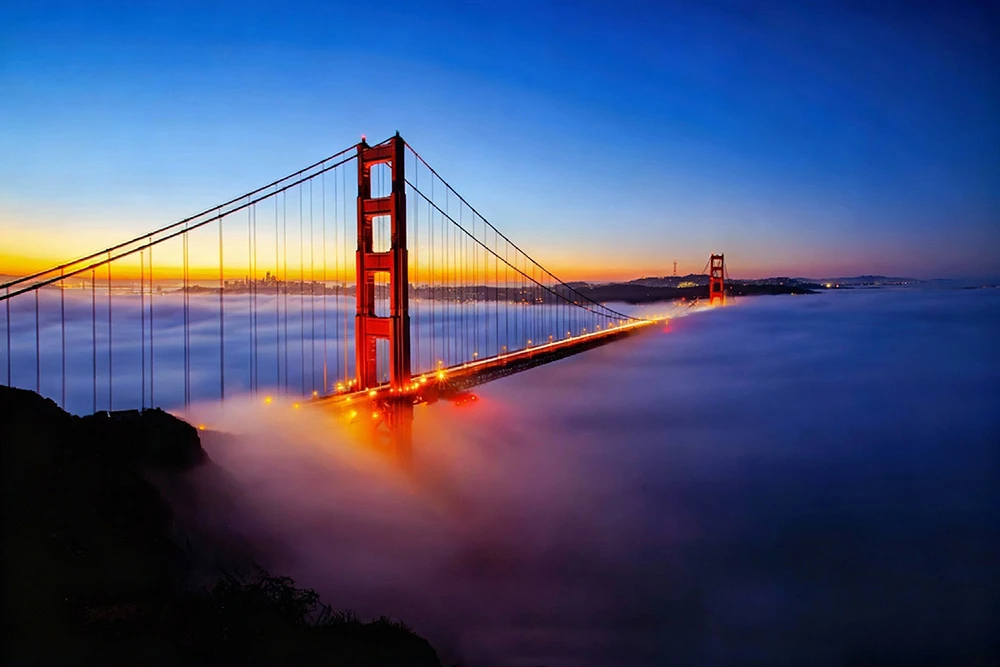
Leashed elephants on Market Street, by the book
I laughed the first time I heard there’s still a rule about elephants on Market Street technically, you need a leash. Only in San Francisco would the law be so earnestly prepared for the impossible, while the cable car bell rings and the fog beads on your jacket. It feels like the city winking at you, equal parts sensible and wonderfully absurd.
Locals pass around this elephantine tidbit the way you’d share a good secret, knowing it lives mostly in dusty archives. The city keeps odd laws like sea glass in a jar, tiny glints of history that still catch the light. And somehow that makes the place feel kinder: even our wild fantasies are acknowledged, labeled, and looked after just enough of a leash to keep the magic from trampling the morning rush.
Depression days when bridges rose, banks stood firm
It still amazes me that in the harshest years, when paychecks vanished and dinner tables went quiet, this city somehow refused to flinch. While breadlines were growing across the country, not a single bank here failed; the vaults kept their lights on, and people kept their trust. I remember learning that and feeling an odd steadiness, the kind that lets you breathe a little deeper.
And then, in that same era, they chose to build big: the Golden Gate and the Bay Bridge rising out of fog and tidal wind, stitching the shoreline together with steel. It wasn’t bravado as much as stubborn optimism a promise thrown across the water that tomorrow would be reachable. That’s the flavor of San Francisco to me: salt in the air, rivets gleaming after rain, and a quiet belief that resilience can be made, piece by piece, until it spans the bay.
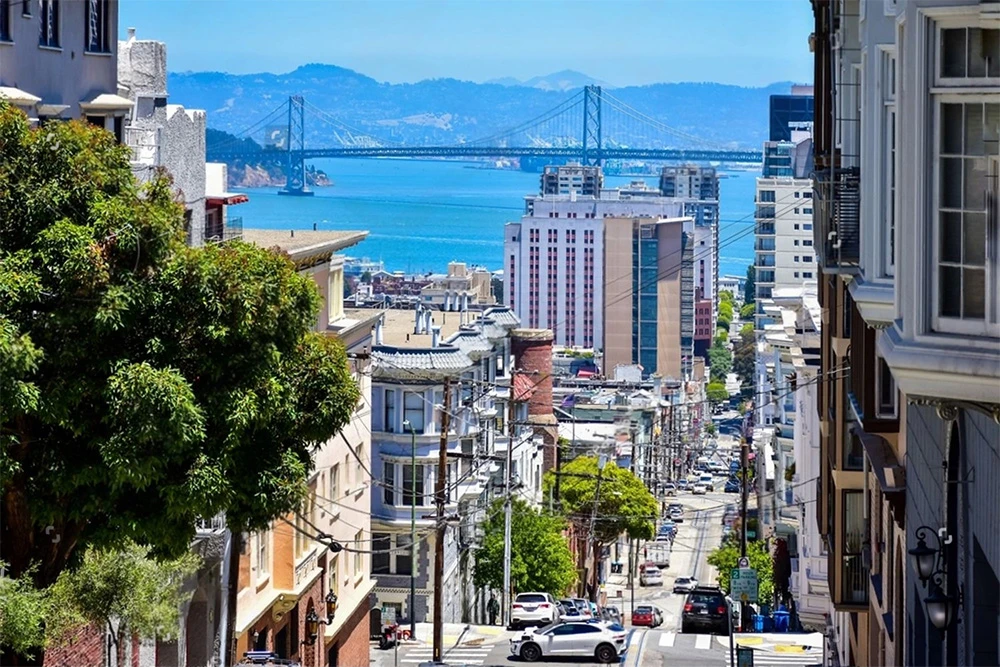
The fortune cookie you know was born here
Funny how a crisp cookie can change what we think we know. I remember sitting under a ginkgo, steam drifting from a paper cup in the cool air, when I learned that fortune cookies weren’t Chinese at all – they began at the Japanese Tea Garden in Golden Gate Park. Over a century ago, Makoto Hagiwara, a Japanese immigrant who cared for the garden with meticulous love, started slipping sweet, hopeful messages into little folded treats. You can almost hear the koi ripple and the hush of bamboo when you picture that idea taking shape – gentle, simple, generous.
What gets me is how something so small can feel so kind. Those paper slips are like folded whispers, reminding you that luck can be offered, not just found. And the cookie itself became a quiet bridge between cultures, a bite size tradition carrying the garden’s spirit of welcome into countless dinners and conversations. It’s a soft surprise, the kind that lingers – not in a museum way, but in the warm memory of someone, long ago, rooting for you.
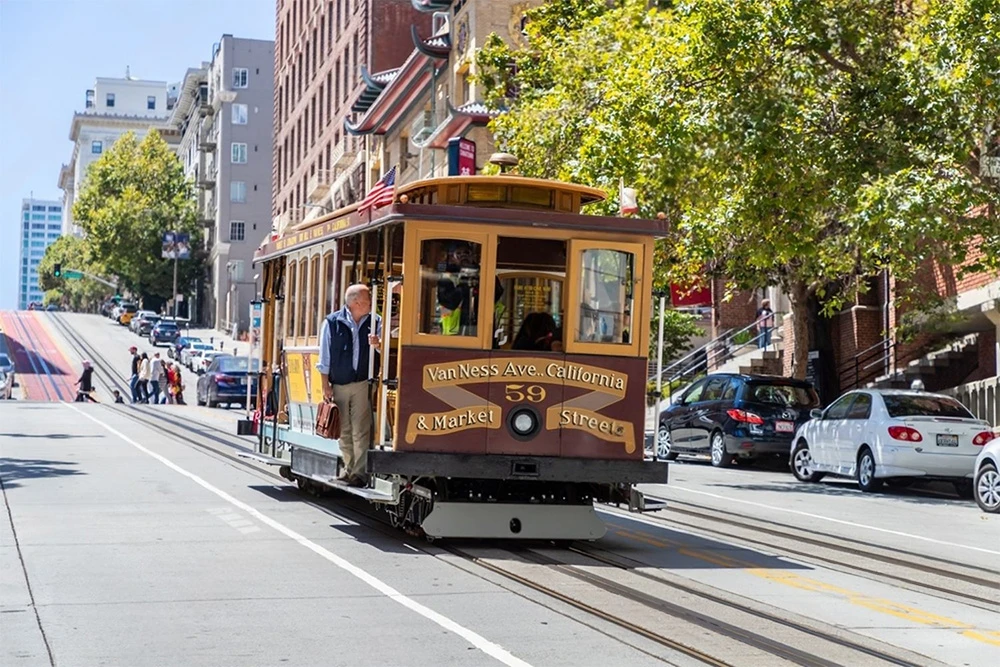
One bright jewel crowns the nighttime skyline
I still smile when I catch that single blink at the tip of the Transamerica Pyramid the little beacon they call the Crown Jewel. On fog soft nights, the air smells of salt and late night coffee, and that tiny light feels like a quiet heartbeat in the sky.
What I love is how it shows up for us: it’s lit for moments that matter Lunar New Year, Pride Week the kind of evenings when strangers turn into neighbors. It feels like the most San Francisco thing: a small, steady sign that says we belong, a wink from the skyline that makes the whole place feel close.

From 'Ugly Law' to Open Hearted Streets Today
It still startles me that a place known for welcome once tried to hide people away. In 1867, San Francisco passed America’s first “Ugly Law,” banning those deemed “unsightly” from public view. The words feel brittle in the mouth, like something that should have cracked and fallen apart the moment it was spoken.
I remember learning that over a windy morning by the bay and feeling a hush inside, like a cold curtain drawn across a sidewalk. What a small, frightened idea, to decide who gets to be seen. The pain of it lingers in the story, but so does the lesson: visibility is a kind of love.
Thankfully, the law is long gone, and the city’s spirit feels like the fog lifting after dawn faces of every shape and story coming into focus. On the corners, I notice ramps and bright murals, elders chatting with drag queens, sign language rippling through conversations, and the warm clatter of belonging rising like a chorus. It reminds me that a city is most beautiful when it refuses to look away.
A suburb where the dead outnumber the living
I still smile when a town greets you with a wink. “It’s great to be alive in Colma!” the signs joke, and it lands because it’s true: back in 1902 the city up the road outlawed burials, and whole graveyards were gently relocated here, leaving this place with more residents below ground than above. On a breezy afternoon the lawns ripple, cypress cast cool shadows, and the air smells faintly of cut grass and stone dust like a library of names breathing quietly underfoot.
What gets me is the tenderness behind the humor. I remember feeling oddly comforted, as if this town decided that memory deserved its own address, somewhere calm, while the neighboring city made room for the restless living. There’s a humility to it practical, a little mischievous, and deeply human reminding you that a place can carry both laughter and reverence, and still make you grateful to be here, alive and paying attention.
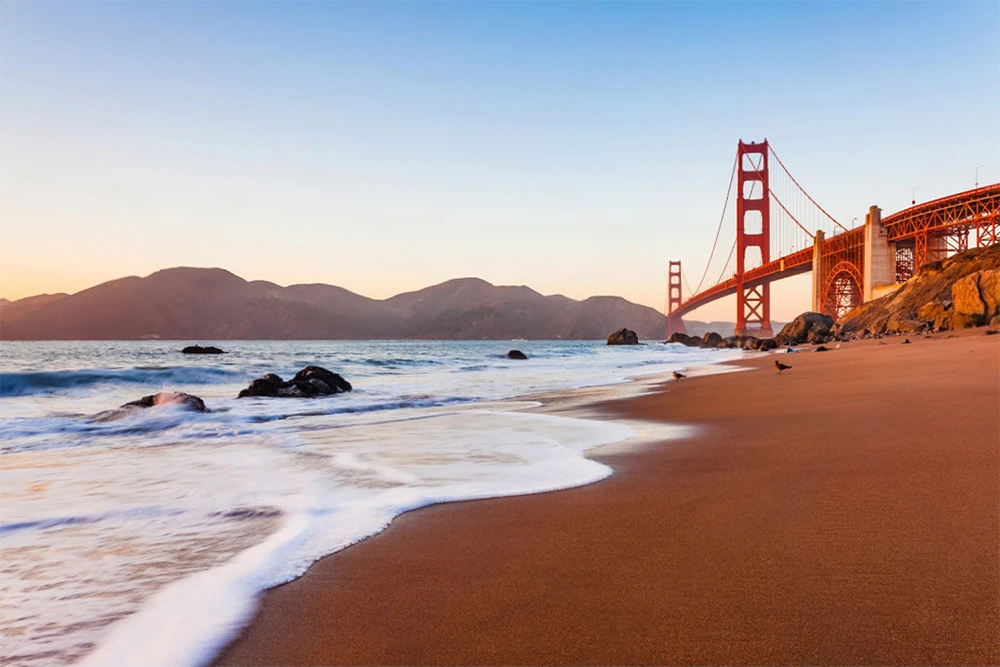
A city once perfumed by waves of wild fennel
Some days the wind carries a faint licorice note, the kind that sneaks up like a shy note in a song. I remember catching it on a cold morning bay air salted, sidewalks damp and feeling oddly cared for by a smell.
Turns out the city once wore fennel along its edges and empty lots, enough that early settlers started calling it the “city of perfume.” In San Francisco, that anise sweet breath used to drift over dunes and hilly streets, a green ribbon threading the fog.
It still feels right that a warm smell, not a landmark, might be the first hello. A scrappy plant gave the place a soft reputation, and I love how that lingers: a small kindness on the breeze, reminding you that beauty here often arrives quietly, and then stays.

A city where fortunes are licensed, like taxis and dreams
I still smile at the idea that even destiny needs a permit. Since 1966, fortune tellers here have been regulated, their second sight filed neatly beside building codes and bakery inspections. The detail feels absurd and oddly tender at once an official stamp pressed onto incense smoke. It tells you something about the place: the belief that magic is real enough to deserve rules.
In San Francisco, the fog wraps neon and the air smells of salt and espresso, and you might see a blinking palm sign tucked between a taqueria and a law office. What gets me is the kindness of it: the city doesn’t shoo the seers away it gives them a place in the books, says yes, be strange, but be safe. That old licensing still on the books is a quiet promise that wonder belongs here, not as a spectacle, but as a neighbor.
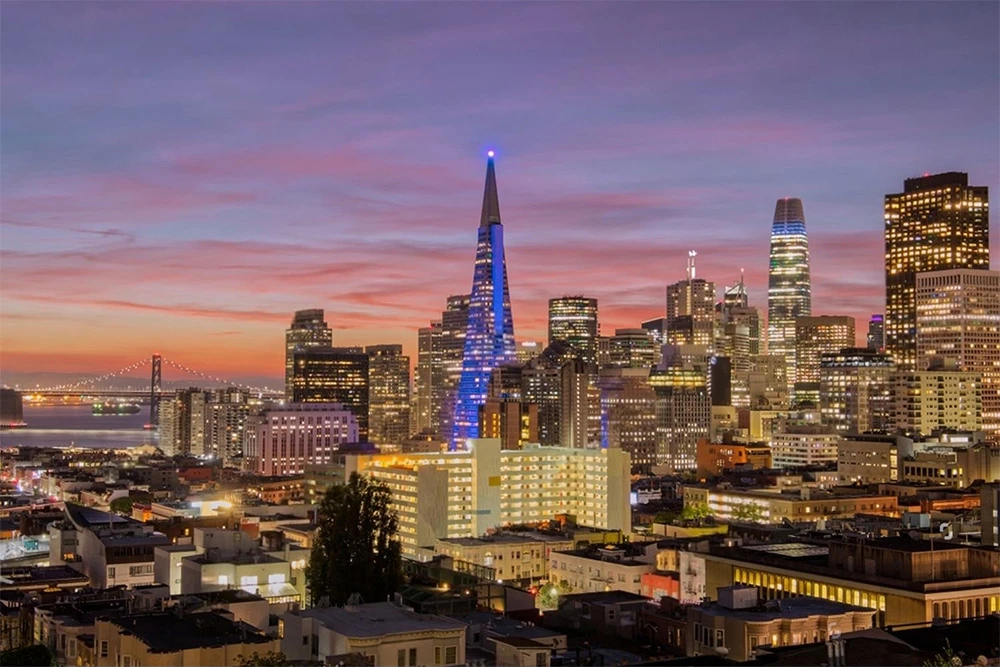
A bridge that's painted forever, never truly finished
I love that the paint on the Golden Gate Bridge never really dries. On fog soft mornings, when the wind tastes like salt and the steel hums with traffic, you can almost feel the quiet choreography of it brush meeting metal, color staying alive against the ocean’s slow bite. That bright orange isn’t vanity; it’s a promise that the elements won’t win today.
The maintenance crew jokes the job will be waiting for you when the bridge finally finishes itself, and it makes me smile because isn’t that the gentlest truth? Some things worth keeping need endless care. It feels like the spirit of the place: resilient, a little stubborn, always renewing. The paint is a heartbeat you can’t see, steady beneath the fog, reminding you that love sometimes looks like touch ups and patience rather than grand gestures. Once, standing there with the gulls wheeling overhead, I realized how comforting it is to admire something that’s never done and still shows up, every day, shining.
https://en.wikipedia.org/wiki/Marrakesh
Where the Beats argued, the night still listens
I love how some corners make you lower your voice without knowing why. In North Beach, the cafés feel like little cathedrals of rebellion, their espresso air and clinking cups holding a soft echo of Ginsberg, Kerouac, and Ferlinghetti voices that wandered and collided until the windows paled with dawn. I remember sitting there once, feeling the hum of old arguments under the tabletops, as if ideas had seeped into the wood and stayed, warm and stubborn.
City Lights Bookstore still keeps first editions within arm’s reach, those faintly foxed pages smelling of dust and rain. On some evenings a poem rises between the shelves without announcement, and you can watch strangers tilt toward the voice, suddenly part of the same weather. What gets me isn’t nostalgia it’s the way the place insists that questions are worth our breath. You step back onto the street carrying that quiet permission, a little more awake to your own unruly thoughts.
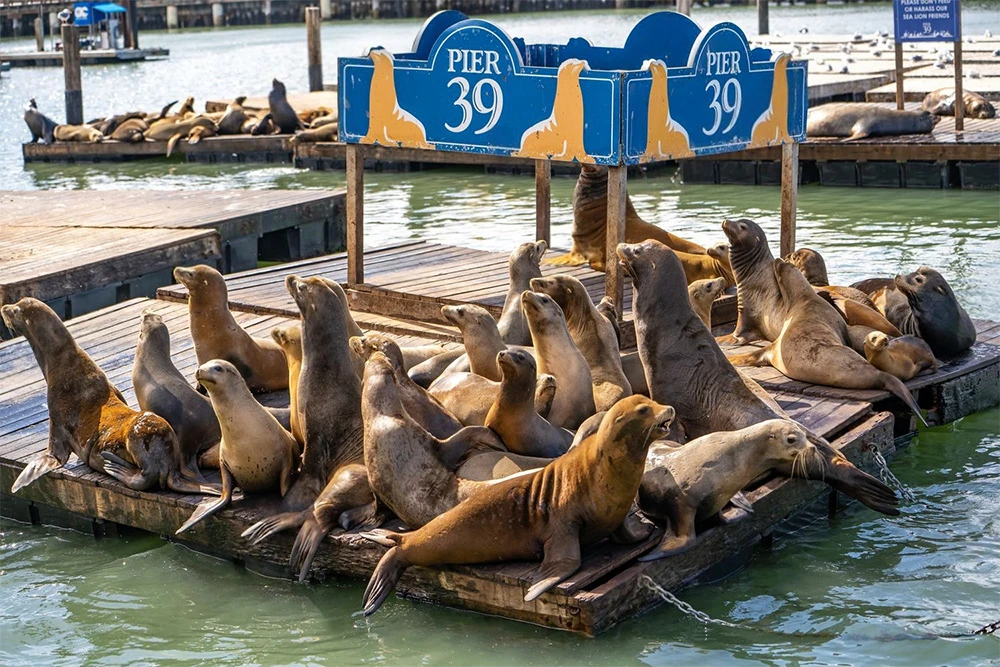
Where luxury towers learn the ground still moves
It’s a strange feeling when a skyline looks a little unsure of itself. Light glances off glass, the bay breeze tastes faintly of salt, and you learn the ground under your feet is not original but made old bay mud held together by decades of ambition. In San Francisco, a few skyscrapers lean ever so slightly; the Millennium Tower even sank over a foot and tilted several inches, a luxury address discovering geology’s fine print.
I remember hearing that and feeling an odd tenderness for the place, as if the city admitted it, too, wobbles sometimes. There’s a humility in a skyline that owns its balance, a reminder that progress here is always in conversation with the earth below. People still laugh in sunlit lobbies, foghorns still murmur at dusk, and life goes on with a tiny tilt like living on the edge of a question and somehow that makes the beauty feel more honest.

Where dogs outnumber kids, love wears a leash
I didn’t expect to smell peanut butter biscuits from a bakery meant for dogs, but there it was, warm and sweet in the morning air. The numbers even back it up: in some years there are over ten percent more pets than children, and somehow that feels perfectly logical here. San Francisco treats dogs like regulars chalkboards listing pup cakes, shopkeepers keeping water bowls by the door and I remember grinning as a baker carefully iced a bone shaped cookie with a customer’s name.
Once, around Halloween, I wandered into a dog costume parade that drew a crowd bigger than most human rallies I’ve seen corgis in capes, terriers as tiny dragons, strangers clapping like old friends. The fog pulled across the street like theater curtains, and the city seemed to settle into a softer mood. It doesn’t read as a judgment about kids so much as a love letter to companionship: the easy, everyday kind you can carry beside you, from bus stop to park to cafe, steadying you when everything else changes so fast.
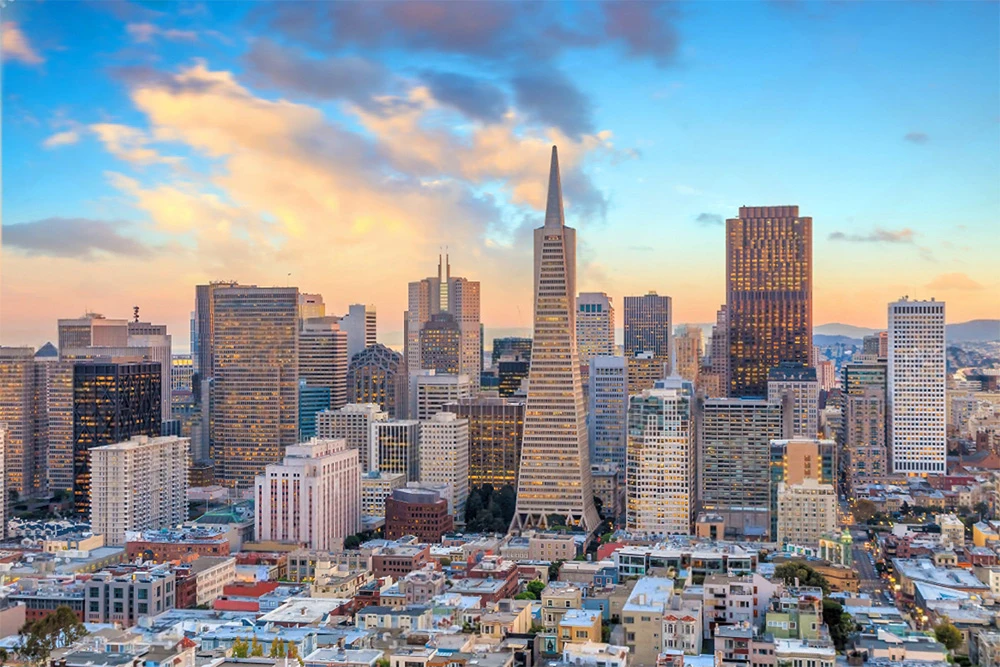
Different foghorn notes guide ships through the Gate
I used to think a foghorn was just a lonely moan, until a gray morning when Karl rolled in and the air tasted like salt. Near the water I noticed the difference: one note deep and patient, another a touch higher, and then a sharper call threading the haze. The foghorns along the Golden Gate Bridge each keep their own pitch, familiar voices in the same weather.
It surprised me to learn that those differences are not decoration but direction. Out past the invisible horizon, ships listen for those exact frequencies and know where they are, even when the shoreline vanishes. There’s something tender in that when sight fails, the place still looks after you by sound alone.
Flower crowns over doorways paid for with ore
It still makes me smile the world flocked for the Summer of Love, then learned the lace trimmed Victorians were bankrolled by the Summer of Gold. Walk past sherbet colored cornices and the air can still taste faintly of incense, a lazy guitar drifting from somewhere upstairs. In Haight Ashbury, the houses feel dressed for a festival, yet their bones remember ledgers and ore carts, like a tie dye scarf thrown over a starched collar.
That’s the part that makes those painted ladies feel so human to me. We kept the frames built by bankers and filled them with communes, posters, and soft afternoons on stoops proof that a place can change its mind and keep its heart. Maybe that’s the city’s secret: the façades glow with peace songs now, but if you listen, you hear the older rhythm too quiet, steady, and surprisingly tender old stories rustling at the edges like receipts.
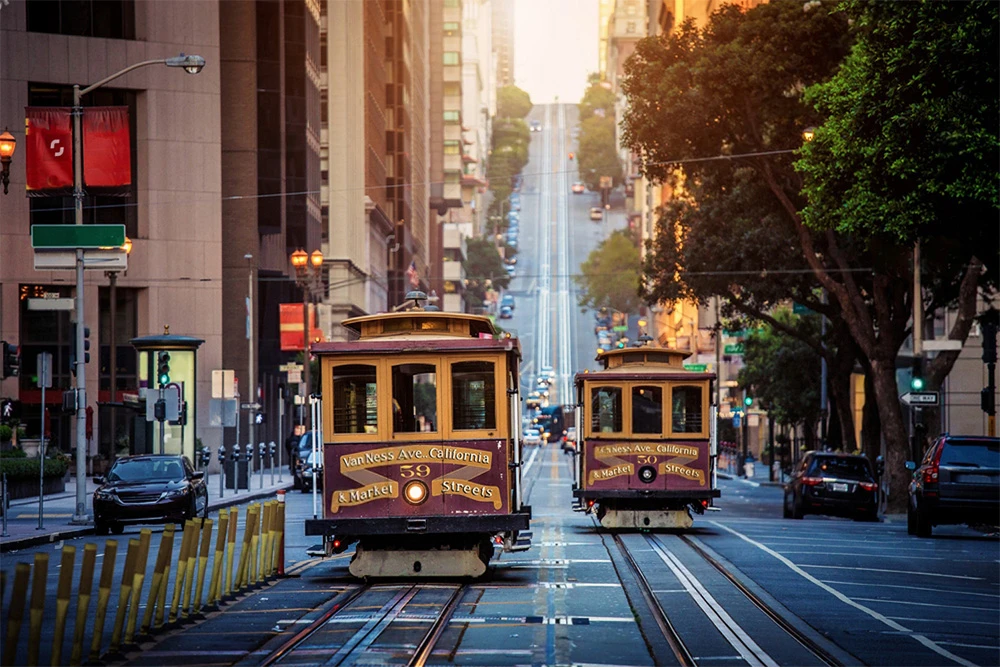
Brunch legends born in fog and friendly feuds
I swear only here could a salad start an argument and end in a toast. Over eggs and endless coffee, someone swears their bartender grandfather shook the first martini; another insists the original Cobb salad was thrown together in a midnight rush; a third leans in, certain the sourdough bread bowl bubbled out of a bakery you’ve never heard of. The tang of warm sourdough rises from the table, olives wink in their brine, lettuce snaps sharply, and nobody seems in a hurry to be right.
San Francisco wears its food lore like a favorite sweater soft at the elbows and full of stories. I remember a brunch that drifted lazily into afternoon while friends and strangers played detective about who invented what, fog smudging the view beyond the glass. The facts are slippery, but the pride is solid; these dishes feel adopted by the whole city, and the arguing is just another way of saying we care. In the end, no one needs the final word just another bite, another sip, and another reason to linger.
Where the UN Charter found its first notes
I love that a room built for arias once held the quiet, stubborn work of peace. In 1945, beneath chandeliers and velvet balconies, delegates drafted the United Nations Charter in the War Memorial Opera House while fog pressed the windows and the city hummed outside. The contrast still surprises me: polished brass, dusty stage light, and the rasp of history clearing its throat.
Friends talk about protests and tie dye and posters bleeding color, but that same stage once hosted global diplomacy. The leap from psychedelic streets to world making sentences doesn’t feel like a contradiction; it’s the same urge to reinvent, the same salt air, the same restless heartbeat that keeps pushing for better.
I remember sitting there once, listening to the room’s soft hush between performances, and thinking how decisions can sound small at first. San Francisco makes change feel like tuning an orchestra – notes wobble, then find each other – and suddenly the whole place hums with a new kind of future.

A Kind Idea That Saved Horses, Lifted a City
The first time I heard a cable car bell, it struck me less as machinery and more like a heartbeat. Then I learned the story: in 1873, Andrew Hallidie watched horses slip on slick cobblestones and couldn’t stand their suffering; from that ache came the cable car, a kinder way up a hard hill. I remember feeling a little stunned that something so iconic began with simple compassion, not swaggering invention.
In San Francisco, where the air smells faintly of salt and the streets rise steep and honest, that kindness grew into the city’s signature sound. The wooden seats warm in the sun, brass glints, and the grip beneath the floor feels like a gentle hand guiding the climb. It’s beautiful, really how an everyday ride can carry a quiet promise that strength doesn’t have to be cruel.
Accidental proposals and Burning Man’s first beach
Some evenings feel like they lean in and whisper yes. On Baker Beach, the red rock turns warm at dusk, the fog shimmers at the edges, and the surf keeps a slow, calming rhythm; no wonder the old stories say the sunset has tripped more than a few accidental proposals. I remember the salt in the air and that soft, rose colored light on people’s faces how it makes strangers relax and, just for a moment, believe the tide might carry good news.
Before the desert, Burning Man held its first gathering here, a bonfire on the sand that later moved outward and grew. I like that this shore makes big decisions feel possible engagements, art, any leap that needs a little courage. Standing between the cold Pacific and the red cliffs, I remember feeling steady and awake, a quiet certainty settling in with the evening.
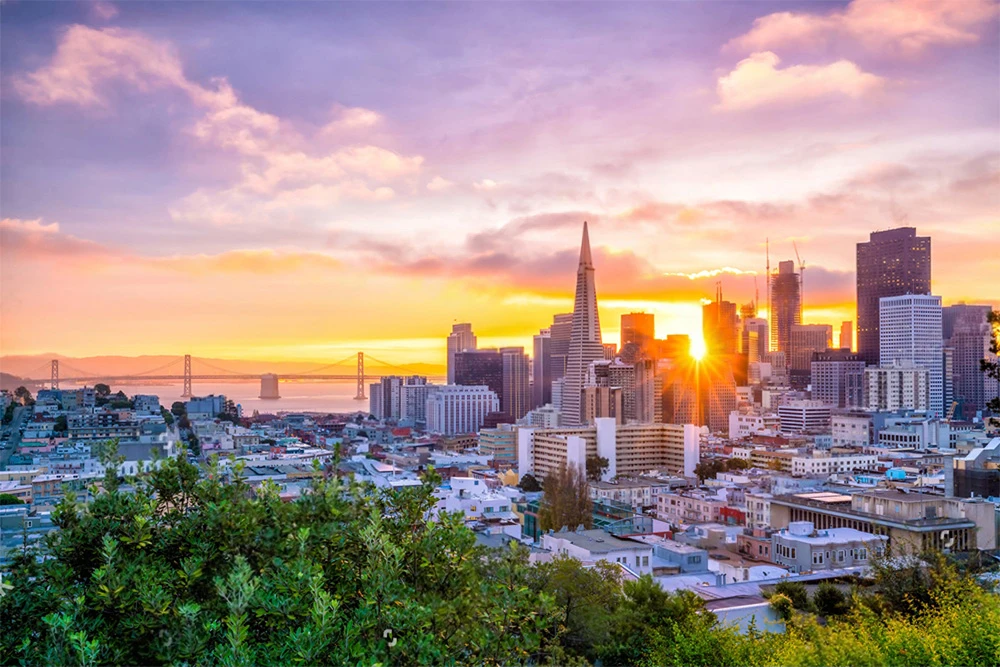
A quiet stone labyrinth above the restless Pacific
I love how it hides in plain sight just a simple circle, nothing flashy, while the ocean rolls below. At Lands End, someone shaped a winding path from local rock, an act of patience you can feel in the air. When fog draws a pale curtain, the place turns meditative and a little eerie.
And it’s rarely crowded. The big viewpoints nearby fill with voices, but here the noise fades. With each slow turn, my thoughts finally settled; I remember the hush, the taste of salt, and the grit of damp stone under my fingertips. It surprised me how small it is, and how big it feels almost like a door to more space built from nothing but stones and time.

Rainbow crosswalks that became a permanent love letter
I remember stepping onto those painted stripes and feeling my mood lift, like someone cracked open the sky just for the street. The colors were bright enough to cut through the fog, and there was this everyday music all around heels clicking, laughter, the sweet drift of bakery sugar while a flag seemed unfurled underfoot.
It started as a neighborhood art project, just a burst of color and hope, and then people simply wouldn’t let it fade. The joy of it stuck, and the city made it official: these rainbow crosswalks would stay. In the Castro District, permanence isn’t about stone monuments; it’s about the moments a community refuses to let go.
What I love most is how the asphalt speaks without a speech. It feels like a soft vow from the street itself: you’re seen here, you’re safe, you belong. Every crossing becomes a small celebration of queer pride and the messy, beautiful chorus of diversity ordinary steps made extraordinary by color that refuses to be quiet.

Sacred architecture from a hard chapter endures in Japantown
I always feel a hush settle here before the city’s clatter returns – incense drifting from a corner shop, the faint sweetness of mochi, wooden beams worn soft by decades of fingertips. The lines stay simple, the facades modest; you can trace the WWII internment era in the sturdy joints and unadorned thresholds, the way the buildings seem to lean into resilience instead of ornament.
San Francisco’s Japantown is one of the last still standing in the U.S., and these surviving structures carry a quiet gravity. Neighbors speak of the sidewalks as sacred ground, not with ceremony but with everyday tenderness – a nod, a sweep, a festival lantern rehung. You feel the survival here, steady as a heartbeat under the floorboards, and it’s hard not to walk a little softer, grateful for a community that turned endurance into a home.
Where Weirdness Is Treasured Like a Civic Virtue
One evening the fog arrived early, tasting faintly of salt and eucalyptus, and the skyline disappeared mid sentence. I remember thinking the weather here is a restless editor, striking lines and adding new ones between cable car bells. It felt playful, like the city was shrugging and saying, we’ll figure it out when we see it.
On the hills, stories turn up in small ways mosaic steps flashing beneath worn sneakers, a trumpet leaking music from a porch, wild parrots scolding the wind. Someone always swears there’s a tunnel beneath that block or a law that makes no sense, and somehow it fits; in San Francisco, the strange feels right at home. The place seems to collect legends the way other cities collect parking meters.
And that’s the part I love: how it makes room for all the odd corners of a person. You don’t have to tuck your quirks away; they’re welcomed with coffee steam on a cold corner and a small nod from a stranger who understands. Here, the everyday stretches enough to hold the mythic and that generosity is the city’s true heart.
When the Bay Turns Into a Ghostly Instrument
I remember the first time the wind went quiet out by the Marina, and the water began to sing. Beneath the chop there’s an instrument carved right into the edge of the Bay the Wave Organ and when the tide muscles in, it lets out those long, low notes that tingle the ribs. The air smells of brine and wet stone, gulls heckle overhead, and the sound slips through the pipes like a whale call stitched to the wind. Only San Francisco would tune its shoreline with a thing like this.
The sculpture was built from old cemetery tombstones, salvaged when the graves were moved, their names softened by time. You sit with the salt on your sleeves and it doesn’t feel morbid it feels tender, as if the city found a way to give its past a voice again. The notes rise and fall with the water, a patient conversation between tides and time, and for a moment you feel lucky to be a listener, held in the quiet between memory and the waves.
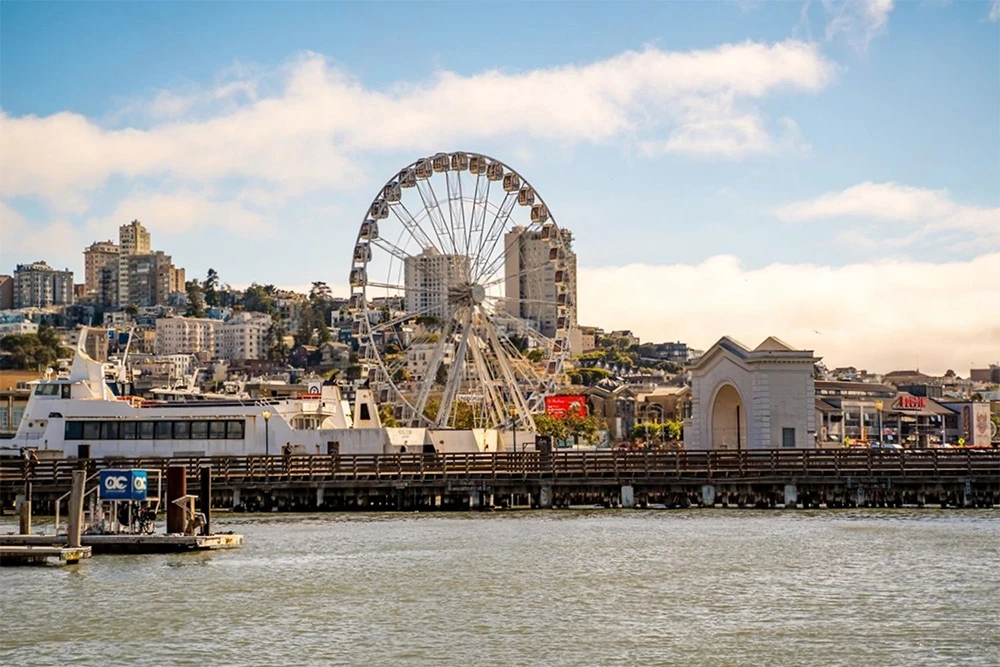
Final thought
From hidden stories to small details and human moments, the truer side of this place reveals itself in gentle increments. Together, they gather like a mosaic easing into focus. In San Francisco, that truth often shows up quietly in everyday life, waiting to be noticed. Here’s to looking closer and letting curiosity keep us inspired.

